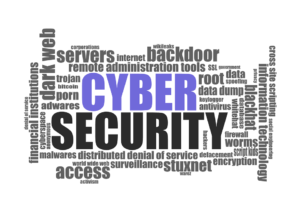
By Bryce Austin —
Cybersecurity breaches are frequent, frustrating and becoming more massive with each new headline. The worst data breach in healthcare history was the Anthem breach of February 2015. More than 78.8 million records were stolen by a foreign government that does not have strong diplomatic relations with the USA. Those records included the names, birth dates, Social Security numbers, and home addresses of the individuals that ever did business with Anthem—or even applied for a policy. The more recent Equifax breach has dwarfed that number, with 145.5 million people impacted.
Some companies know they are in the crosshairs of the best cybercriminals in the world.
* Do you have a database of HIPAA data that would be valuable on the black market?
* Do you process over one million credit card transactions per year?
* Are you in the payroll or money-transfer business?
* Are you developing a technology that foreign governments would be interested in?
* Are you in a business that a hacktivist group or Nation State may find ethically questionable?
If you can answer yes to any of the above questions, congratulations, you are in the highest-risk group. Most companies are not in the highest-risk category. The remaining companies fall into three large groups, including those that have:
* A significant regulatory environment to operate within (healthcare, banking, insurance, etc.).
* Data that others could monetize (trade secrets, credit card numbers, Personally Identifiable Information (PII), data on publicly traded companies that has not yet been made public, etc.).
* Data that is important and necessary for the company to operate.
Before the proliferation of ransomware, the third category would not have been included. Many in the cybersecurity field used to lambast salespeople selling cybersecurity tools that said, “Everyone is a target.” The problem is that cybercriminals have figured out an important new angle to their business model: companies that don’t have information that is valuable on the black market still have information that’s valuable to the company itself. The bad guys are finding a way into a company, encrypting as much data as possible, and then extorting money from you to get your own data back.
In today’s world, everyone is a target. From hospitals that need their Enterprise Resource Planning (ERP) system to treat patients, to accounting firms needing tax engine software to process their clients’ tax returns, every company wants to prevent business disruptions. Ransomware attacks are designed to disrupt your company’s ability to do business until you pay up.
Assessing Your Company’s Risk

So, how can you assess your actual cybersecurity risk? The truth is that you can’t. This is similar to assessing your risk of contracting a certain disease or of having a tornado damage your home. These things happen infrequently, and as such, it’s impossible to say that a given company will experience a cybersecurity incident of X dollars in total damage every Y years. A better plan of attack is the following:
* Accept that your company is a target of cybercriminals that would hope to profit from your success, either by stealing your valuable information, or by encrypting your valuable information and ransoming it back to you.
* Assess your relative risk. The areas to take into account include company size, your industry, the number of countries you do business in (especially those known to support government-sponsored hacking), and the strength of your cybersecurity defenses.
* Assess your own risk tolerance, assess the potential damage to your company that a hacker could inflict, and assess what cybersecurity countermeasures you currently have employed. If you employ strong countermeasures, your risk will be far lower than many of your competitors, even if putting an actual number on it is challenging.
One of the best ways to quantify your cybersecurity risk is to get quotes for cybersecurity insurance. For example, if your building’s fire insurance policy costs $10,000 per year for $1 million in coverage, then the insurance company thinks you will have a large claim on that policy less than once every 100 years. Otherwise they would lose money selling you the policy.
In fact, they are probably guessing that you will have a large fire once every 500 years so that they make a good profit on the policy. If it costs $250,000 for the same coverage, your risk of having a fire is much higher than that. The cost of a cybersecurity insurance policy will help you determine the relative risk of a cyber incident in comparison to another type of business incident, such as a building issue (fire/flood), an operational issue (the loss of a key executive in your company), or a liability issue of some sort.
It’s imperative to realize that regardless of size, reach, and financial level, your company is a target for cybercrime. All that really matters is if a criminal feels there is a good return to be had on their investment of time and money. If your defenses are poor, then their effort level is low. If you have strong defenses, then the return must be high for the adversary to expend significant effort to breach your systems. Many attacks are non-specific. They search for a particular vulnerability across many companies and report back success. If you are found to be vulnerable, you will probably be attacked. Criminals will try to monetize their efforts in many ways. Your data is valuable to you, and they can monetize this via ransomware.
Thankfully, ransomware and the cybercriminals who use it can be stopped. They are looking for easy targets. All companies are susceptible, but with the right cybersecurity defenses, such as multi-factor authentication, a strong antivirus package, and a solid data backup routine, cybercriminals will deem your company too much effort to hack. This is your opportunity to make cybersecurity a competitive advantage for your company!
ABOUT THE AUTHOR:
Bryce Austin is the CEO of TCE Strategy, an internationally-recognized speaker on emerging technology and cybersecurity issues, and author of Secure Enough? 20 Questions on Cybersecurity for Business Owners and Executives. With over 10 years of experience as a Chief Information Officer and Chief Information Security Officer, Bryce actively advises companies across a wide variety of industries on effective methods to mitigate cyber threats. For more information on Bryce Austin, please visit www.BryceAustin.com.













